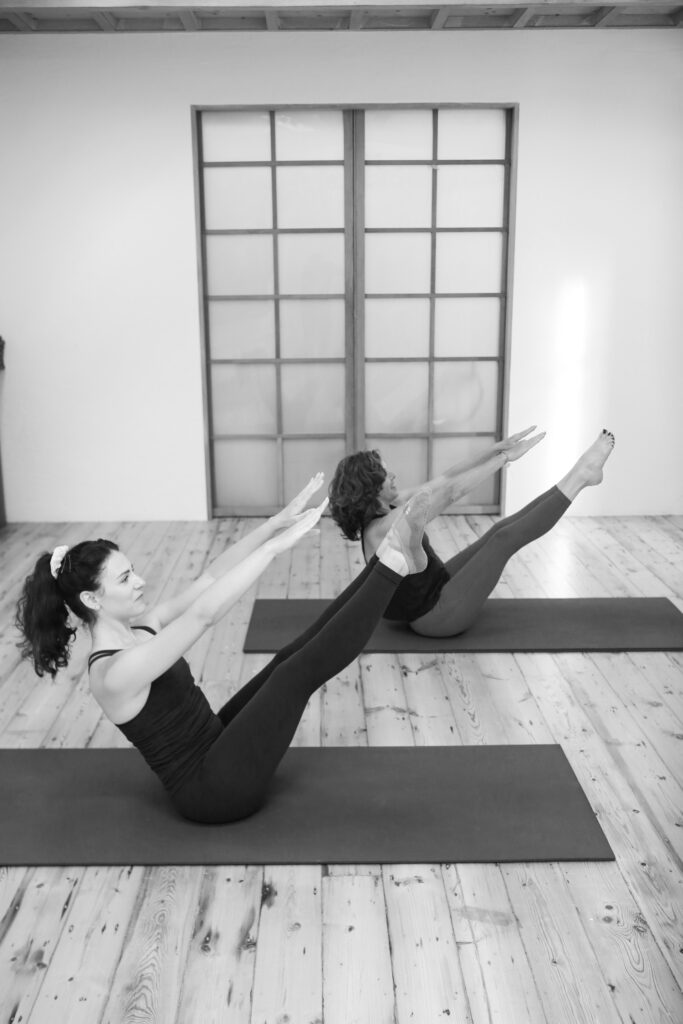Pelvic Stability and Deep Abdominal Engagement
Stability
To find our pelvic neutral try the following:
Tilt the pelvis to north as far as possible so the back flattens, then gently tip the pelvis as far south as comfortable so you get a small arch in the lower back. Neutral position is between these two extremes.
Moving on, bringing legs together and pressing the upper pelvis and lower spine into the mat, while drawing the navel down towards the spine – connecting the lower back to the mat. This is the starting possiton for supine (laying on your back) exercises.
To engage our lower abdominals as we breathe out we must try to draw up the muscles of our pelvic floor and hollow the lower abdominals in toward the spine, like an internal zip. By contracting these muscles we create a “girdle of strength” forming a natural corset to protect our lower backs.
To practise contracting lower abdominals:
Ribcage Placement
Our abdominal wall attaches to our lower ribs. Using our abdominals will help us to stabilise the ribs and keep our thoracic spine (middle back) in good alignment. During inhalation we should have the feeling of breathing into the back and sides of the ribs. During exhalation we should feel as though the ribcage softens drops towards the hips.
Shoulderblade Positioning and Stabilisation
Most of us have a tendency to over work our upper trapezius muscles, (the muscles at the top of the shoulders.). We must try to relax these muscles at all times and maintain our shoulder blades stabilised against our ribcage.
Practice the feeling of gently pulling the shoulder blades down and back towards the spine.
Head and Neck Positioning
The head and neck must stay in correct alignment throughout our exercise. We should feel as though the skull is balanced directly over the shoulders, and as though a string is gently pulling the head up and away from the shoulders, giving us a feeling of length at the back of the neck.
To practise using our deep neck flexors:

